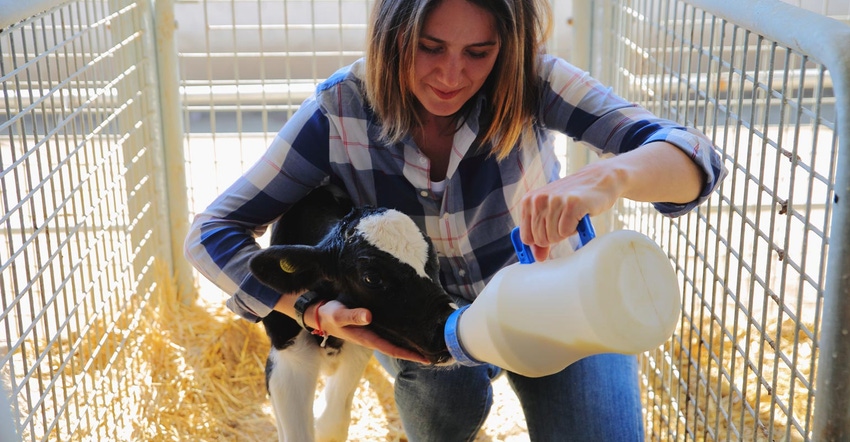September 2, 2020

According to Mike Steele, University of Guelph, colostrum provides not only immunoglobulins, which are key for calf immune function, but also various bioactive molecules and cells necessary for good health.
At the Four-State Dairy Nutrition and Management Conference this summer, Steele presented a session about nutritional regulation of gut health and development with a focus on colostrum and milk, and a session focused on weaning and beyond.
Two key findings from research include:
1. Delaying the first feeding of colostrum beyond six hours after birth will impact passive immune transfer and negatively influence the colonization of beneficial bacteria in the calf intestine.
2. Colostrum management practices are considered successful when 90% of tested calves have a serum total protein concentration greater than or equal to 5.2 grams per deciliter, or 80% have greater than or equal to 5.5 g/dL.
Passive transfer
In the University of Wisconsin-Extension’s Heifer Blueprint: Assessing Failure of Passive Transfer in Calves, Sarah Mills-Lloyd, former Oconto County agriculture Extension agent, and Tina Kohlman, Fond du Lac County dairy and livestock Extension agent, share how to collect blood and determine if passive transfer failed, as well as reasons for failure of passive transfer.
Kohlman and Mills-Lloyd note the following observations:
Feed calves more milk. The best innovation in calf feeding in recent years is 3- and 4-liter bottles, which allow for feeding greater amounts of milk to calves.
Transition calves from colostrum. Feeding transition milk from the second and third days of a fresh cow milking (or a combination of colostrum and whole milk on a 1-1 ratio) resulted in improved gut health and development compared to going straight from the first feeding of colostrum to whole milk or milk replacer. Feeding transition milk was very similar to feeding colostrum for those three days. Both have positive immunological and nutritional effects.
Weaning changes gut. Weaning a calf results in a large transformation of the gut.
Consider step-down approach. If feeding high levels of milk (8 or more quarts per day), wean after 8 weeks of age with a two-week stepdown to reduce the impact of weaning on calf performance and health.
Provide enough nutrition. Heifers offered a high plane of nutrition (85% concentrate) for two months post-weaning had improved reproductive development compared to heifers fed 70% concentrate.
Hagedorn is the state dairy program manager for University of Wisconsin Extension. This column is provided by the University of Wisconsin-Extension Dairy Team.
You May Also Like




